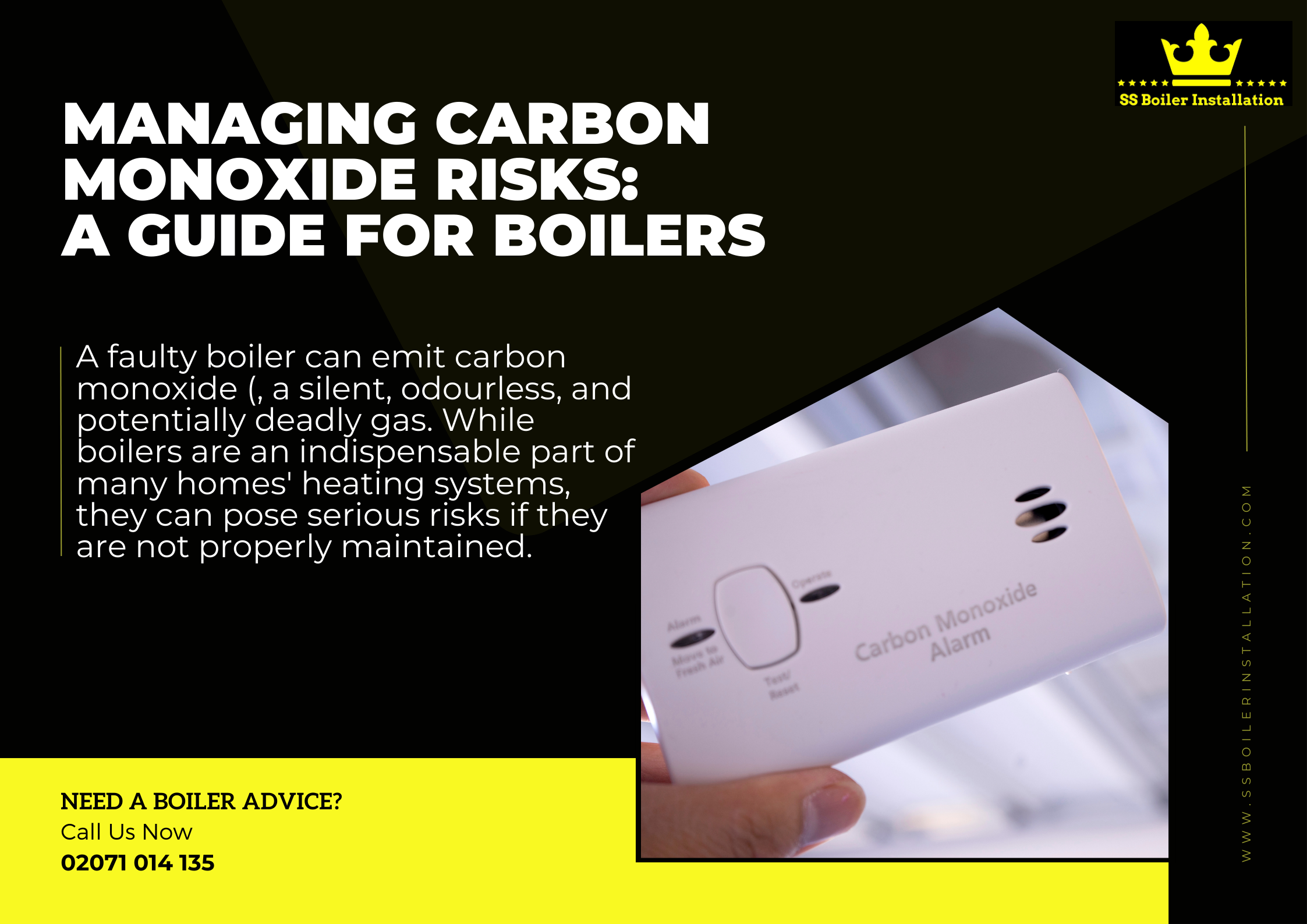
Managing Carbon Monoxide Risks: A Guide for Boilers
A faulty boiler can emit carbon monoxide (CO), a silent, odourless, and potentially deadly gas. While boilers are an indispensable part of many homes’ heating systems, they can pose serious risks if they are not properly maintained. To keep your home safe and warm, we’ll discuss carbon monoxide dangers, how to recognise its presence, and essential boiler maintenance tips.
The cause of carbon monoxide is incomplete combustion of fuels like gas, oil, coal, and wood. A properly functioning boiler should burn these fuels completely, but if there is insufficient oxygen or if the boiler malfunctions, CO can be released. It can quickly accumulate in enclosed spaces without detection, leading to poisoning or even death.
A major concern with carbon monoxide poisoning is that its initial symptoms mimic those of common illnesses, such as headaches, nausea, dizziness, and fatigue. As a result, CO poisoning can easily be mistaken for the flu, resulting in delayed detection and potentially fatal consequences. In order to avoid carbon monoxide poisoning, it is imperative to install carbon monoxide detectors in your home and to recognise the signs, especially if you suspect that your boiler may be malfunctioning.
The key to preventing CO leaks and ensuring your heating system operates safely and efficiently is regular boiler maintenance. Here are some essential tips:
- Annual Servicing: Schedule an annual service by a qualified technician to inspect and clean your boiler. They’ll check for any signs of wear, corrosion, or malfunction that could lead to CO emissions.
- Ventilation: Ensure proper ventilation around your boiler to allow for the safe dispersal of combustion gases. Blocked vents can trap CO indoors, increasing the risk of poisoning.
- Carbon Monoxide Detectors: Install CO detectors on every level of your home, particularly near bedrooms. Test them regularly and replace batteries as needed.
- Watch for Warning Signs: Keep an eye out for warning signs that your boiler may be malfunctioning, such as yellow or orange flames (instead of blue), soot or stains around the appliance, or unusual smells.
- Professional Installation: If you’re installing a new boiler or replacing an old one, always hire a qualified professional for the job. Improper installation can increase the risk of CO leaks.
The threat of carbon monoxide requires vigilance and proactive measures to mitigate. You can keep your home safe and comfortable all year long by understanding the risks, recognising the symptoms, and prioritising regular boiler maintenance. Make sure your boiler is safe-it could save your life.
For more info, contact your local company SS Boiler Installation.
